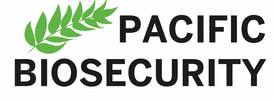The clean boats, clean ports framework guides the Protect our Islands programme for inter-island biosecurity. The framework suggests actions to prevent the spread of invasive species within Pacific island countries and territories.
|
Introductory reading
If you are not familiar with tools to prevent the spread of invasive species in the Pacific, you can read these three guides available from the SPREP Battler Resource Base as a first step.
|
What is the clean boats, clean ports framework?
Pacific island countries and territories collaborate for effective international prevention (Biosecurity/Quarantine). Biosecurity/Quarantine teams are mainly based at international entry points. Effective inter-island prevention of invasive species spread can be difficult because of small workforces in distant islands and difficulties in keeping training up to date.
The Pacific islands region is a diverse place. Because all countries face different challenges, a one-size-fits-all approach to prevent the spread of invasive species is unrealistic. So, we have developed a regional approach that can incorporate this diversity. The clean boats, clean ports framework promotes flexible options that countries can adopt, depending on their unique circumstances.
One of the fundamental principles of biosecurity is to manage risk at its source. This is the basis for clean boats, clean ports: to manage invasive species risks at the main port(s) of entry. The framework uses a checklist as a tool to focus on steps to reduce the risk of invasive species:
clean boats, clean ports checklist and assessment
Anyone can do a clean boats, clean ports assessment for their country using the online survey in English and French. There are approximately 70 questions in the survey, and it can be completed in less than 30 minutes.
The assessment is also built into the PRISMSS navigator system, which is the best way for National Invasive Species Coordinators to update their information.
You can contact PRISMSS for guidance through the assessment process, and what the next steps are.
Example biosecurity plans, templates and other biosecurity resources
Pacific island countries and territories collaborate for effective international prevention (Biosecurity/Quarantine). Biosecurity/Quarantine teams are mainly based at international entry points. Effective inter-island prevention of invasive species spread can be difficult because of small workforces in distant islands and difficulties in keeping training up to date.
The Pacific islands region is a diverse place. Because all countries face different challenges, a one-size-fits-all approach to prevent the spread of invasive species is unrealistic. So, we have developed a regional approach that can incorporate this diversity. The clean boats, clean ports framework promotes flexible options that countries can adopt, depending on their unique circumstances.
One of the fundamental principles of biosecurity is to manage risk at its source. This is the basis for clean boats, clean ports: to manage invasive species risks at the main port(s) of entry. The framework uses a checklist as a tool to focus on steps to reduce the risk of invasive species:
- At ports (and airports) and the areas around these sites in the main international arrival point (at least), up to and including the whole island, and
- On boats, including smaller boats that operate locally, and larger ferries and cargo vessels that service distant islands.
clean boats, clean ports checklist and assessment
Anyone can do a clean boats, clean ports assessment for their country using the online survey in English and French. There are approximately 70 questions in the survey, and it can be completed in less than 30 minutes.
The assessment is also built into the PRISMSS navigator system, which is the best way for National Invasive Species Coordinators to update their information.
You can contact PRISMSS for guidance through the assessment process, and what the next steps are.
Example biosecurity plans, templates and other biosecurity resources
- New Zealand Department of Conservation inter-island biosecurity guidance for Pacific island countries
- Biosecurity guidelines for the Phoenix Islands Protected Area
- Biosecurity Plan for Ouvea Atoll, Loyalty Islands, New Caledonia
- Palau inter-island biosecurity framework
- Pacific Marine Biosecurity Toolkit
- Aotearoa Marine Biosecurity Toolbox
- Battler Resource Base
- CABI Invasive Species compendium
- Coconut Pests and Diseases Toolkit
- Pacific Pests, Pathogens and Weeds
- UK Overseas Territory biosecurity toolkit
- Global Register of Introduced and Invasive Species
- Pacific Invasive Ant Toolkit


